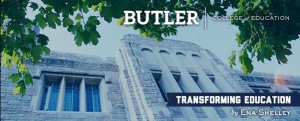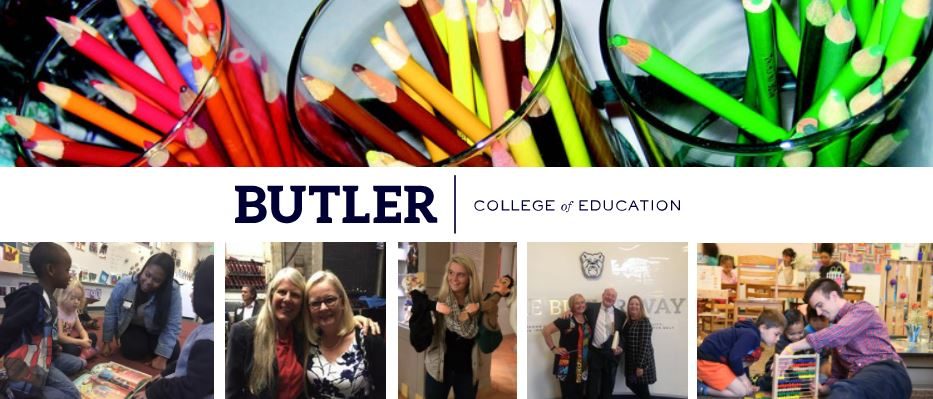 Reinventing “Rigor” in Education
Reinventing “Rigor” in Education
A Guest Column by Professor Cathy Hartman
I have been troubled by the word rigor, often used today to describe something lacking in contemporary education. Standardized testing of students can supposedly expose and even correct non-rigorous instruction, or perhaps even worse, there are perceptions that standardized tests in and of themselves define rigor in education.
The dictionary definition of rigor is “harsh, unsupportive, inflexible,” and, even as defined by a children’s dictionary, “strict precision.”
When I started rebuilding my understanding of the word rigor, I decided to first define what it means to me. To me, rigor is a task or goal that might be challenging, worthwhile, meaningful, worthy, and involves critical and abstract thinking. This is not how I would define standardized testing, hence my initial disconnect.
When I started rebuilding my understanding of the word rigor, I decided to first define what it means to me. To me, rigor is a task or goal that might be challenging, worthwhile, meaningful, worthy, and involves critical and abstract thinking. This is not how I would define standardized testing, hence my initial disconnect.
I decided this word must be reinvented, maybe even put to rest. My own reflective process, collaborative dialogue with colleagues, and intentional observations of learning helped me realize the focus and “ultimate goal” of instruction should not be on rigor. We should focus our attention on supporting students to feel empowered in their learning.
Abby Bucher ’05, a K–1 teacher at the Indianapolis Public Schools/Butler University Laboratory School, captured a moment with her students that documents metaphorical thinking. This example illustrates a learning process that moves beyond inflexible thinking or “strict precision,” as rigor is defined. It instead shows empowerment in thinking, learning, and understanding when students are given the opportunity to move beyond a single answer. Or, in my mind, it is the essence of reinventing rigor.
In January we all came back together after I had been gone on maternity leave since September. I asked the children, “How do we show how we have grown as a community using rocks?” I had some ideas, but I never expected this: one friend [the term Lab School students use to describe classmates] began saying that we started off as an igneous rock, and then, when we split up into the classes, that was the heat and pressure. …When we came back together, we changed into a metamorphic rock. Here we were taking our knowledge of rocks and turning it into a beautiful metaphor of how our community had evolved.
Clearly Mrs. Bucher’s students had a strong understanding of content from their classroom learning experiences and were able to merge these understandings with describing their classroom community.
“Rigorous” standardized testing does not determine the depth that our children, our students, our grandchildren, and our neighbors are adding to the world. The most important component can and should be shown through the learning, thinking, and application process offered and facilitated by our classroom teachers. If we approach learning engagements with the lens that children are capable and creative individuals who have prior knowledge and experiences, their learning possibilities are endless.
An excellent example recently occurred in a Lab School second grade classroom taught by Brittany Shackleford ’11:
Wednesday morning, as a community of mathematicians, we had an exciting and powerful discussion about whether or not a dollar bill is a rectangle or a rectangular prism. We started the discussion during problem solving with our math partners [peer partnerships determined prior to a lesson] by sharing our thinking about the question, Is a dollar bill a rectangle or rectangular prism?
Each partnership came to share time ready to justify their thinking. At the beginning of our discussion, a majority of the class shared that they believed a dollar bill was a rectangle. They felt that, since the dollar bill was “flat,” it had to be two-dimensional. This is when the mathematical debate began. The students who believed the dollar bill was a rectangular prism passionately shared their thinking and justifications. This share led to a more in-depth discussion about the attributes of a 2D shape and 3D shapes. As a community of mathematicians, the students created a checklist of attributes for 3D shapes that included:
• A 3D shape had to be solid
• Could be held
• Had to have measurable thickness
As the students compared the dollar bill to their checklist, many of the students shared that they were beginning to change their thinking. Noah then had the idea that we should use a ruler to measure the thickness of the dollar bill, even though it appeared flat to most students. The dollar bill measured in at less than one millimeter in depth. This measurement was a defining moment in the discussion. The entire class was agreeing and sharing how their thinking had changed throughout the discussion. If the dollar bill met the criteria of their checklist, it must be 3D. At this point, Maddie then shared a final thought that, if the dollar bill was 3D, then everything in the world around is 3D—even a piece of paper. Xiaoyang then shared that even drawing a 2D shape on a piece of paper could make it 3D because of the thickness of the ink on the paper.
This discussion embodied the power of math workshop. As a class we have created a community of mathematicians where the students are engaged in critical thinking, work collaboratively to problem solve, and feel comfortable sharing their thinking.
Let’s work together to inform our community of the thoughtful, empowering work being completed in our schools today. Here are some questions to help you get started with your own reflection. Please share your thinking and stories on our College of Education Facebook page.
• How do you continue to share the important stories of learning like the dollar bill or thinking metaphorically like the K–1 students, instead of tales of rigor associated with a single test, which can derail us from the powerful teaching that should continue taking place?
• How will you commit to a teaching and learning environment that promotes joy, depth, intentionality of lesson design, intentionality of cultivating an environment of thinking and processing, and having an impact on the greater community and world?
• How might you engage in a conversation with your colleagues to help more accurately define the word rigor? Is this the word you want to keep using? What will you use to describe powerful learning?
We look forward to hearing your thoughts.
Dr. Ena Shelley
Dean, College of Education
